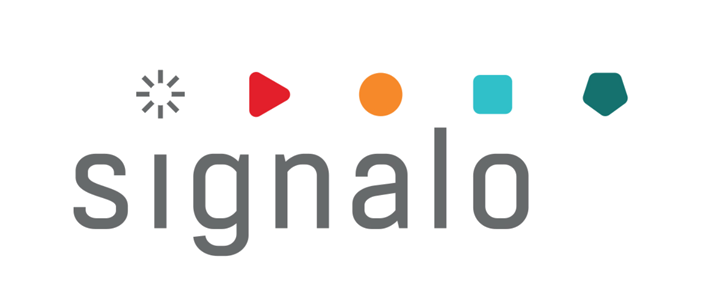Lean thinking in factory layout and design for improved efficiency
Definition of Lean Thinking and its Origins
Lean thinking, also known as lean manufacturing or simply lean, is a management philosophy and set of practices aimed at minimizing waste and maximizing value creation for customers. It originated from the Toyota Production System (TPS) developed by the Japanese automaker Toyota in the mid-20th century.
At its core, lean thinking revolves around the relentless pursuit of eliminating waste in all forms, including excess inventory, overproduction, defects, waiting time, unnecessary motion, and transportation. By constantly seeking to streamline processes and optimize resource utilization, lean thinking enables organizations to enhance their operational efficiency and ultimately deliver higher quality products or services to customers.
Importance of Factory Layout and Design in Achieving Operational Efficiency
- Factory layout and design are critical components of any manufacturing operation. The efficiency and productivity of a factory can be directly impacted by the way it is organized and the flow of materials and information within its premises. A well-designed factory layout can minimize unnecessary movement, reduce bottlenecks, and promote smoother operations.
- Lean thinking emphasizes the importance of creating a layout that supports the principles of flow and value stream mapping. By optimizing the placement of workstations, equipment, storage areas, and material handling systems, manufacturers can eliminate wasted steps, reduce production lead times, and enhance overall operational efficiency.
- An efficient factory layout can also contribute to reducing safety risks, improving employee morale, and facilitating effective communication and collaboration among team members. These factors further enhance the organization’s ability to achieve its production goals and meet customer demands.
Understanding Lean Thinking
At its core, Lean Thinking aims to create value for customers by delivering products or services with minimal waste. It emphasizes the identification and elimination of non-value adding activities, such as unnecessary transportation, excess inventory, overproduction, waiting time, defects, and unnecessary motion. By doing so, companies can streamline their processes, optimize productivity, and enhance overall operational performance.
Examples of Companies That Have Successfully Implemented Lean Thinking in Their Operations
Toyota
One such company is Toyota, which pioneered Lean Thinking through their famous Toyota Production System. By embracing key Lean principles such as just-in-time production, continuous flow, and pull systems, Toyota has become renowned for its operational excellence and high-quality products.
Boening
Another notable example is Boeing, the world’s leading aerospace manufacturer. Boeing adopted Lean Thinking in their production facilities, resulting in significant improvements in efficiency, cost reduction, and on-time delivery. By implementing Lean practices such as value stream mapping, standard work procedures, and visual management systems, Boeing was able to eliminate waste and optimize their manufacturing processes.
Benefits of Adopting Lean Thinking
- Adopting Lean Thinking principles in factory layout and design can yield substantial benefits for manufacturers. By optimizing the physical arrangement of machinery, workstations, and materials, companies can achieve improved workflow, reduced lead times, and enhanced productivity.
- One key aspect of Lean factory layout is the concept of cellular manufacturing. This approach involves grouping machines and workstations together based on product families or processes, enabling efficient material flow and minimizing transportation between areas. As a result, companies can achieve shorter production cycles, reduced inventory, and improved overall efficiency.
- Lean factory design emphasizes the importance of visual management and workspace organization. By implementing visual controls, such as color-coded markings, labels, and signs, manufacturers can enhance communication, reduce errors, and empower employees to quickly identify workflow bottlenecks or abnormalities. Additionally, a well-organized workspace ensures that materials, tools, and equipment are easily accessible, reducing wasted time searching for necessary items.
Factors Influencing Factory Layout and Design
To create an efficient and productive factory, it is crucial to carefully consider various factors that influence its layout and design.
Analysis of production processes and workflows
When designing a factory layout, managers should consider analyzing production processes and workflows. This analysis involves studying and understanding how different tasks and activities are carried out within the factory. By analyzing these processes, managers can identify areas where they can make improvements to optimize productivity and efficiency. This analysis also helps in identifying bottlenecks or areas that may require additional resources or equipment.
Consideration of material flow and handling
Efficient material flow and handling are essential for a well-designed factory. This factor involves evaluating how materials move through the factory, from the raw materials stage to the finished product. The layout should facilitate smooth and unhindered movement of materials, reducing any unnecessary delays or disruptions. This can be achieved through careful placement of machinery, storage areas, and workstations, as well as the use of conveyors or automated systems for material handling.
Ergonomics and safety considerations
Creating a safe and ergonomic working environment is vital for the well-being of factory workers. When designing the factory layout, it is important to consider factors such as proper lighting, ventilation, and temperature control. Additionally, workstations and equipment should be ergonomically designed to minimize the risk of injuries or strain on workers. Safety measures, such as clearly marked exit routes, fire suppression systems, and appropriate signage, should also be incorporated into the design.
Integration of automation and technology
The integration of automation and technology plays a significant role in modern factory design. Automation systems, such as robotics or computer-controlled machinery, can greatly enhance productivity and efficiency. When managers design the factory layout, they should consider how to integrate automation into various processes and workflows. This may involve creating dedicated areas for automated equipment or reorganizing workstations to accommodate new technologies.
Space utilization and optimization
Optimizing space utilization is another crucial factor in factory layout and design. Managers should aim to make the most efficient use of available space, minimizing wasted areas while ensuring that there is enough room for machinery, workstations, and material storage. This may involve using strategies such as vertical stacking, mezzanine floors, or modular designs that can be easily modified or expanded as needed.
Implementing Lean Thinking
Value Stream Mapping (VSM) as a tool for identifying process waste and inefficiencies
VSM is a visual representation of all the steps involved in delivering a product or service to the customer. By mapping out the entire value stream, including both value-added and non-value-added activities, organizations can identify process waste and inefficiencies.
Through VSM, companies can identify areas where excessive motion, waiting times, overproduction, and defects occur. This enables them to develop strategies for reducing waste and improving process flow. By eliminating non-value-added activities, companies can streamline their operations, reduce lead times, and improve customer satisfaction.
Use of 5S methodology
The 5S principles include Sort, Set in Order, Shine, Standardize, and Sustain. By implementing these principles, organizations can create a clean and organized workplace, thereby improving productivity and efficiency.
- Through the Sort principle, organizations eliminate unnecessary items from the workspace, ensuring that only essential tools and materials are present.
- The Set in Order principle involves arranging items in a logical and efficient manner, allowing for easy accessibility.
- The Shine principle focuses on regular cleaning and maintenance to ensure a safe and productive environment.
- Standardization involves creating standardized procedures and work instructions to ensure consistency and reduce errors.
- Finally, the Sustain principle emphasizes the importance of continuous improvement and employee engagement to maintain the gains achieved through 5S implementation.
Visual management techniques for enhanced communication and problem-solving
By using visual tools such as kanban boards, visual work instructions, and performance dashboards, organizations can enhance communication and problem-solving.
Kanban boards provide a visual representation of the workflow, allowing teams to track tasks and identify bottlenecks in real-time. Visual work instructions help operators understand complex processes quickly and accurately, reducing errors and improving efficiency. Performance dashboards display key performance metrics, enabling employees to monitor their progress and make data-driven decisions.
By implementing visual management techniques, organizations can improve communication, transparency, and accountability throughout the factory, leading to better overall performance.
Cellular manufacturing
Application of Cellular Manufacturing to improve workflow efficiency
- Cellular manufacturing is a lean concept that involves grouping machines, equipment, and workstations into cells based on product families or process similarities. This layout allows for a more efficient flow of materials and information, reducing lead times and eliminating unnecessary transportation and handling.
- By implementing cellular manufacturing, organizations can eliminate the need for excessive material handling and reduce the distance traveled by products during production. This streamlines the workflow and improves overall efficiency. Additionally, cellular manufacturing promotes cross-training and teamwork, as employees within a cell are responsible for multiple tasks, leading to increased flexibility and agility.
Continuous improvement through Kaizen events and employee involvement
To sustain lean thinking in factory layout and design, continuous improvement is imperative. Kaizen events, also referred to as rapid improvement events, aim to make significant improvements in a specific area or process through short-term projects.
- During Kaizen events, cross-functional teams work together to identify and implement improvements. By involving employees directly in the improvement process, organizations tap into their valuable knowledge and expertise. This promotes a culture of continuous learning and empowers employees to take ownership of their workspaces.
- Through regular Kaizen events and employee involvement, organizations can continually strive for excellence, achieving higher levels of productivity, quality, and customer satisfaction.
Toyota Production System (TPS) – A benchmark for Lean Thinking in factory layout and design
One of the most well-known case studies of Lean Thinking implementation is the Toyota Production System (TPS). This system, developed by Toyota Motor Corporation, has become a benchmark for lean manufacturing practices and has revolutionized the way factories are laid out and designed.
- The TPS focuses on eliminating waste and maximizing efficiency in the production process. It emphasizes continuous improvement and the involvement of all employees in identifying and solving problems. Toyota has been able to reduce inventory levels and improve production responsiveness by implementing a pull-based system, where customer demand drives production rather than forecasted demand.
- In terms of factory layout and design, TPS promotes the concept of flow, which means products and materials move smoothly and continuously through the production process. This is achieved by organizing workstations in a way that minimizes movement and transportation, reducing the time and effort required to complete tasks.
- Additionally, TPS places emphasis on visual management, where tools such as Kanban boards and Andon systems visually communicate information. This allows employees to quickly identify and address any problems or bottlenecks in the production process.
Analysis of cost savings, quality improvements, and lead time reduction achieved through Lean Thinking
When implementing Lean Thinking, companies can expect to achieve significant cost savings, quality improvements, and lead time reduction.
- The elimination of waste and inefficiencies in the production process achieves cost savings. By reducing unnecessary inventory, minimizing transportation and movement, and optimizing resource utilization, companies can lower their operating costs.
- By focusing on root cause analysis and continuous improvement, companies can identify and address the underlying causes of defects and errors. This helps in enhancing product quality and customer satisfaction.
- By streamlining the production flow and implementing a pull-based system, companies can respond quickly to customer demands and reduce lead times.
Conclusion
- By adopting Lean principles, manufacturers can optimize their production processes, reduce waste, and ultimately enhance their profitability. Lean Thinking enables companies to streamline their operations, eliminate unnecessary steps, and create smoother flows within the factory floor.
- By fostering a culture of continuous improvement, manufacturers can harness the collective knowledge and expertise of their workforce, leading to innovative ideas and better problem-solving. Moreover, proven techniques to enhance efficiency and reduce production bottlenecks include optimizing material flow, implementing visual management systems, and utilizing data analytics.
- Lean is not limited to a specific industry or company size, and it offers benefits. Whether a small-scale manufacturer or a multinational corporation, implementing Lean principles can lead to significant improvements in productivity, quality, and customer satisfaction.
- As global market competition continues to intensify, Lean Thinking can provide a competitive advantage by enabling companies to adapt quickly to changing customer demands and market trends.
Don't miss this opportunity
Free Consultation
Find out how you can take advantage
Don’t waste time on ineffective solutions! Take advantage of our free consultation and see how our software can increase your company’s efficiency. Give us the chance to prove that innovative solutions are the key to success in your industry. Reserve your free consultation now and accelerate the development of your business!
Values
Discover the benefits of collaboration
We offer a free consultation as the first step of collaboration, allowing you to familiarize yourself with our approach and verify our advisory competencies. This way, even before making a decision, you’ll feel that your situation and problem have been well understood, and the proposed solution will be optimally tailored to your company’s situation.
Our services (support) are included in a subscription, which does not generate hidden costs. The subscription-based billing allows for a significant reduction in the entry threshold into the system and enables immediate testing.
We are communicationally independent – we can develop our system without depending on the client’s IT department. We do not generate additional work for the client’s IT department. This way, we lower the implementation risk and associated costs. The possibility of quicker implementation of the solution results in faster return on investment.
Login to our applications is secured at a high level, characteristic of banking solutions. At the same time, the login process is intuitive. Your data is as secure as in a bank thanks to our system.
We offer multilingualism in our solutions through real-time translation—each employee operates applications in their native language. This enhances efficiency and reduces costs by expanding the potential labor market and eliminating the need to hire translators.
Our software features an interface optimized for quick, easy, and intuitive use, even by digitally excluded or poorly skilled employees. This means real-time savings in both time and training costs for your workforce in using the new software. The ability for rapid deployment of software for use results in a shorter transition/implementation period.

















